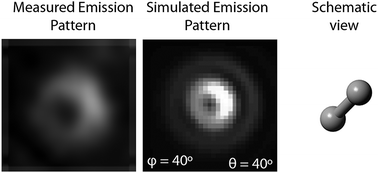This HOT article from Professor Robert Dunn of Kansas University will be part of our upcoming ‘Single’ themed issue, Guest Edited by Henry S. White.
Fluorescence microscopy is one of the most widely used approaches for probing structural and dynamic attributes of both model and natural membranes, and single molecule fluorescence measurements have recently been used to probe the orientation of fluorescent lipid analogs doped into lipid films at trace levels.
In this paper, Professor Dunn and his co-workers extend previous work by characterising the single molecule orientations of six related BODIPY* probes doped into monolayers of dipalmitoyl phosphatidyl choline (DPPC). Their results are discussed in terms of balancing the effects of headgroup association with acyl chain length in designing the optimal placement of the BODIPY probe.
*The BODIPY (4,4-difluoro-3a,4a-diaza-s-indacene) fluorophore is intrinsically lipophilic, unlike most other long-wavelength dyes. Consequently, probes incorporating this fluorophore are more likely to mimic the properties of natural lipids, making them more amenable to studying membranes.
Single molecule probes of membrane structure: Orientation of BODIPY probes in DPPC as a function of probe structure
Kevin P. Armendariz, Heath A. Huckabay, Philip W. Livanec and Robert C. Dunn
Analyst, 2012, 137, 1402-1408
DOI: 10.1039/C2AN16255E











